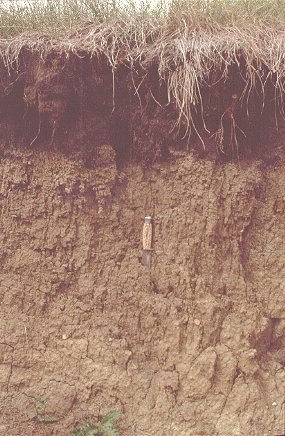 |
Orthic Black ChernozemsBlack Chernozemic soils usually occur in association with mesophytic grasses and forbs or with mixed grass, forb and tree cover and sometimes under alpine grass and shrubs. They are the zonal soils of the Parkland Prairie and True Prairie grassla nds of Western Canada and the Fescue grasslands of the subhumid parts of the Palouse Prairie in British Columbia. The climate is typically cold, rarely mild and humid with occasional periods of moisture deficits during the growing season. Estimated area of mapping units with Black Chernozemic soils as dominant is about 200,655 km2 or roughly 2.2% of the land area of Canada. These soils are developed mainly on calcareous glacial tills, and glaciofluvial and lacustrine deposits. Some soils are also found on aeolian, alluvial and colluvial materials. Calcium carbonate equivalent of these soils can be over 40% as in th e cases of Manitoba lowlands and the eastern part of the Saskatchewan plain. Selected properties:1. Chernozemic Ah horizon with color value darker than 3.5 (moist and dry) and chroma of 1.5 or less (moist).2. B horizon (Bm, Btj, Bt) at least 5 cm thick that does not contain alkaline earth carbonates 3. Lack an eluvial horizon (Ahe, Ae, Aej) at least 2 cm thick. 4. Do not have Bnjtj 5. Do not have evidence of gleying Common horizon sequence: Ah, Bm or Btj, Cca or Ck |